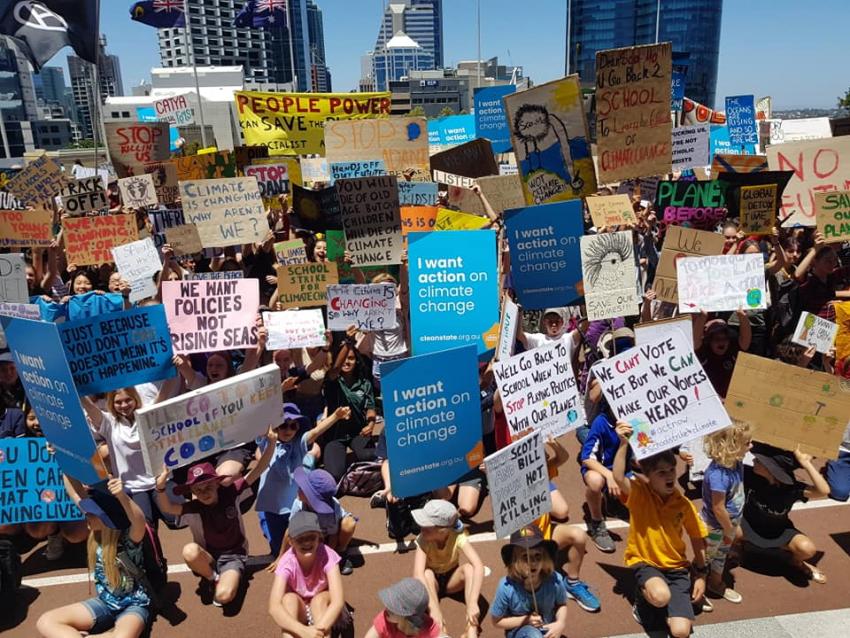‘Education does not transform the world. Education changes people. People change the world.’ Paulo Freire
Leading thinkers, advocates and philosophers have long regarded education as a key tool for social change, and the hope for the future of our societies. These included, amongst many others, Thomas Jefferson, Malcolm X, Nelson Mandela, Maxine Greene and Paulo Freire.
They argued the world was constantly changing and teachers have a great responsibility to direct that change: to ensure students will not be agents of the status quo but, rather, critique forms of institutionalised injustice, champion democracy and become the good citizens of tomorrow.
Studies have shown that people value positive social change highly and most adults want to be involved in creating it.
The 2014 Social Change Impact Report which surveys people from across the world (including China, Germany, the US and Jordan) found that on average, 79% of people surveyed agreed that they can make the world a better place by their actions. The majority agreed that young adults are the most passionate about social change.

School strikes are taking place all around the globe. Image Credit: Alex Salmon
This passion is easy to see, for example, in the recent climate change strikes where tens of thousands of students in Australia and around the world missed school to take to the streets.
Voiceless believes that, by teaching students to become active citizens in our democratic society, we will change our future for the better. And importantly, the future for animals.
Urgent need for animal protection education
Animal protection is regarded as one of the most important social justice movements of our century, and it is now mainstream.
TV, radio, magazines, blogs, websites and even celebrities in Australia and worldwide such as Miley Cyrus and Benedict Cumberbatch discuss this new way of thinking.
We have seen a marked increase in discussion about cruelty issues, documentary films are sweeping cinemas and there is a huge growth in plant-based food investment, technology and vegan products.
There is also a massive and growing public concern with three in four Australians, for example, wanting an end to live export of animals due to animal welfare concerns.
Despite this zeitgeist, Australian students will likely complete their schooling without ever being required to learn about animal protection issues.
If students receive any instruction at all, it will presumably be at the hands of the many for-profit industry bodies who disseminate their glossy materials to schools. Arguably, their primary goal is not critical-thinking but securing their future customers and consumers.
This is not the case with the protection of our environment. Once a fringe concern, environmental education and sustainability is now accepted as a crucial part of the Australian curriculum and a wide variety of non-profit organisations, government and industry contribute to this learning area. Many of us would be highly concerned if this school content was driven exclusively by natural resource industries such as mining and forestry.
Likewise, it would be remiss of us, as a society, to fail to present students with a variety of views on animal protection for debate and discussion.
Without encouraging critical-thinking about the subject of animal protection in schools, our next generation will be ill-equipped to analyse the complex issues they will face.
This leaves them not only as agents of the status-quo, but unskilled and unaware of one of the most important movements of our time.
Voiceless in action
Since 2004, my father Brian and I, along with our team at Voiceless, have strived to be thought-leaders, working at the cutting-edge of the animal protection movement.
To realise our vision of a respectful and compassionate world for animals, we built a multi-pronged strategy of capacity-building, law, publications and campaigns. We focused on shining a spotlight on legalised cruelty; advancing legal protection for animals; raising public awareness via the media; increasing animal protection in science and technology; and empowering the animal protection movement and bringing it into the mainstream.
Throughout these fifteen years, we have always believed in the power of critical-thinking to create positive change for animals.
Today, we are proud to be focusing our energy and resources into education and developing the crucial skills of critical-thinking in youth, our next generation of influencers and decision-makers.
Voiceless is fast becoming the home of animal protection education, dedicated to encouraging students to think critically about animal protection.
Today’s youth will be tomorrow’s change-makers and we need to decide what kind of change we want in our society. Brian and I join millions of others in arguing that protecting animals from suffering and cruelty is a change of the highest importance.
Click here to learn more about Voiceless’s animal protection education (APE) program and how it links to multiple learning areas in the Australian Curriculum.
Voiceless Blog Terms and Conditions: The opinions expressed on the Voiceless Blog are those of the relevant contributors and may not necessarily represent the views of Voiceless. Reliance upon any content, opinion, representation or statement contained in the article is at the sole risk of the reader. Voiceless Blog articles are protected by copyright and no part should be reproduced in any form without the prior consent of Voiceless.

